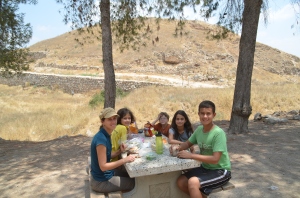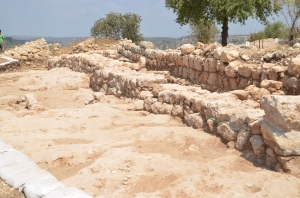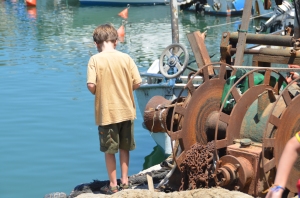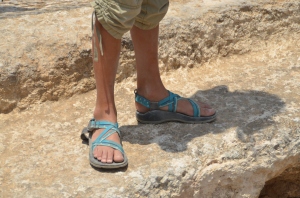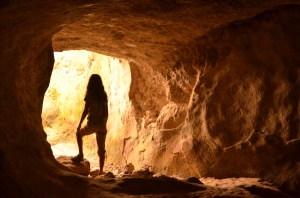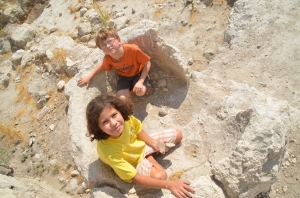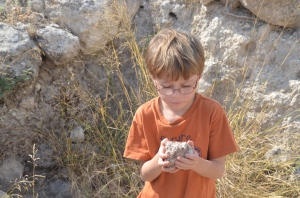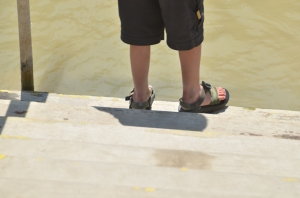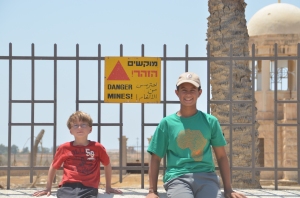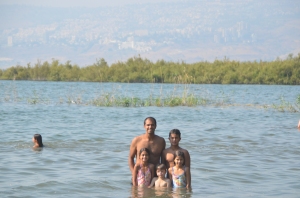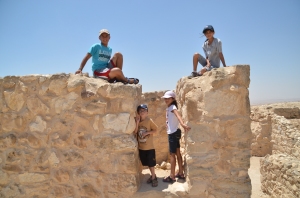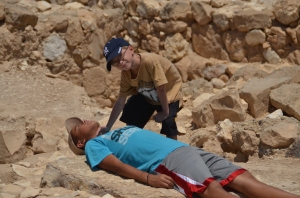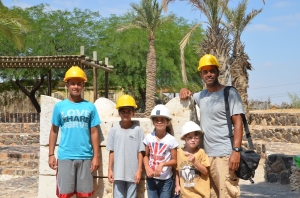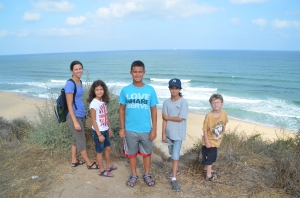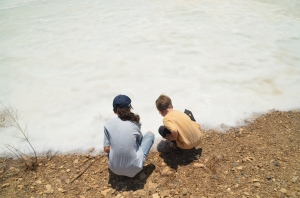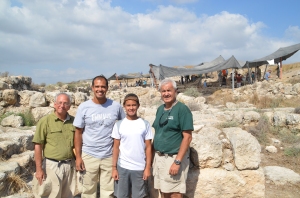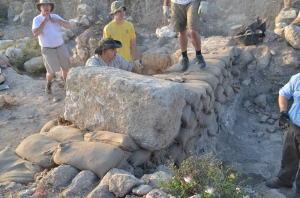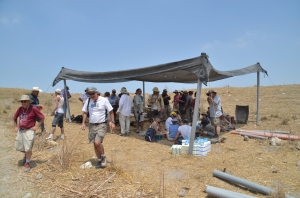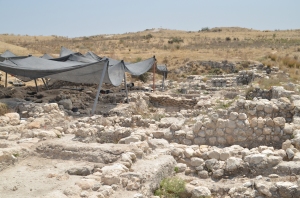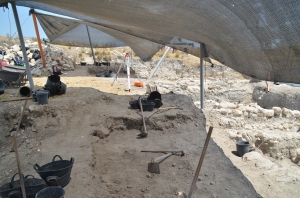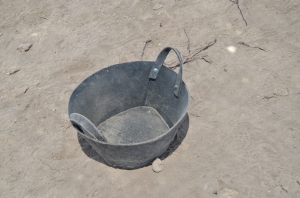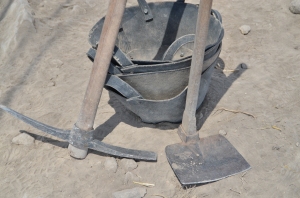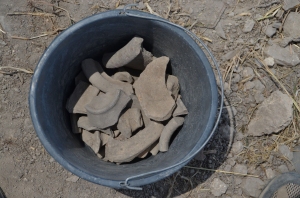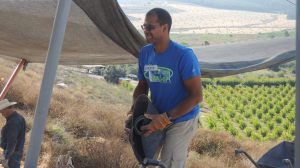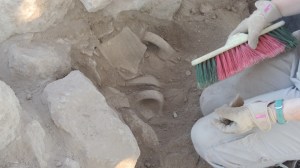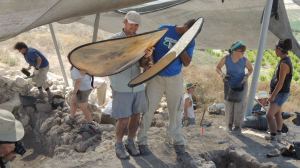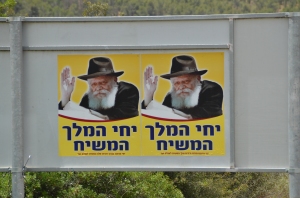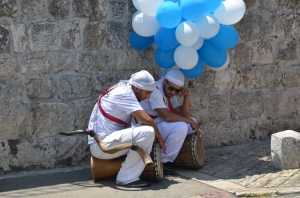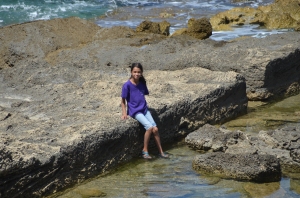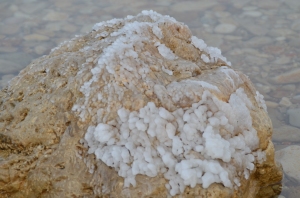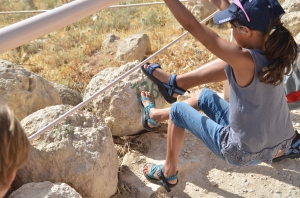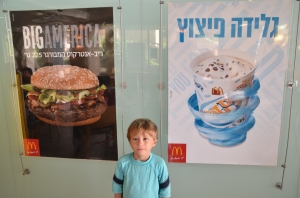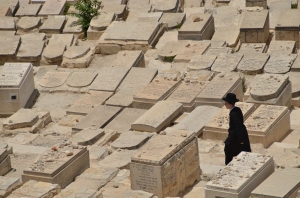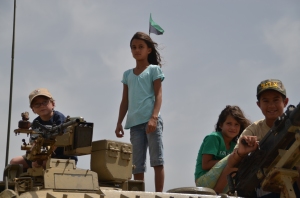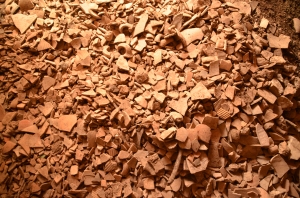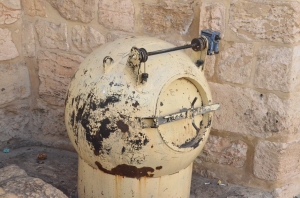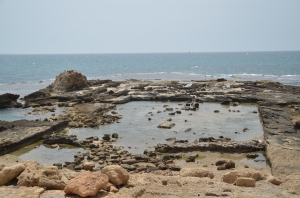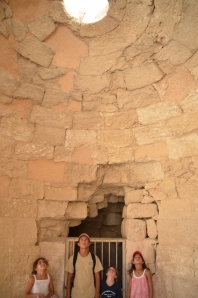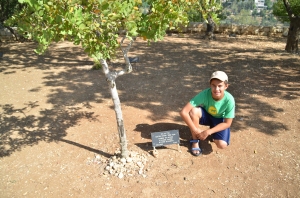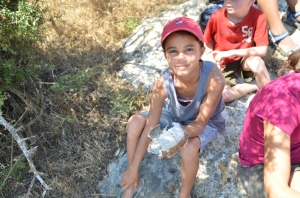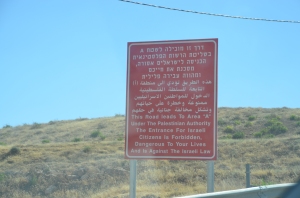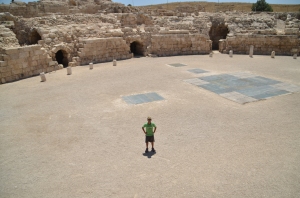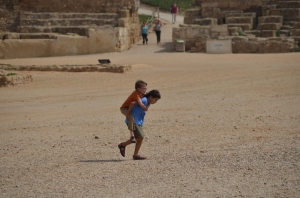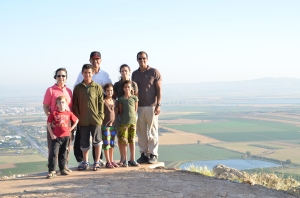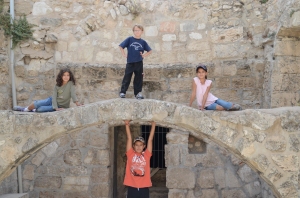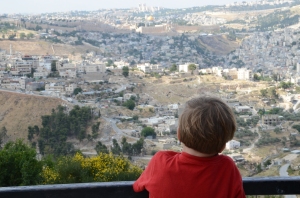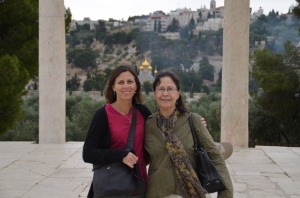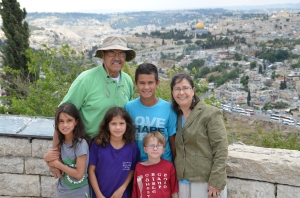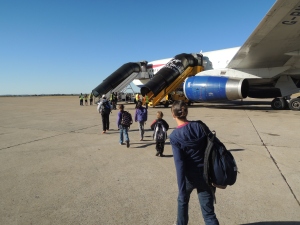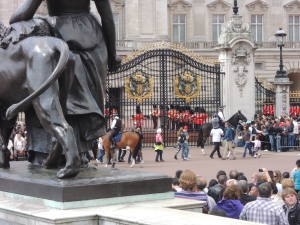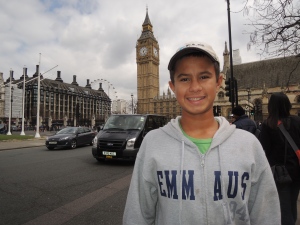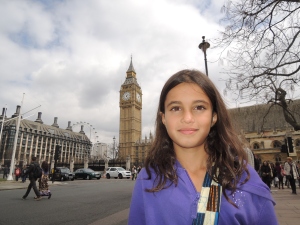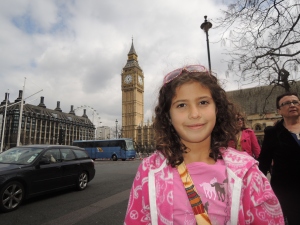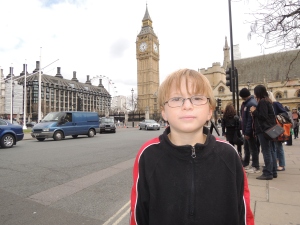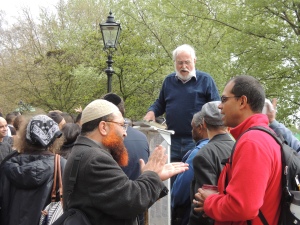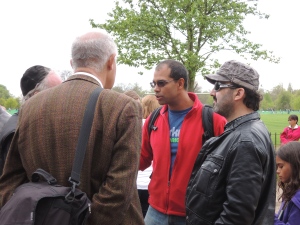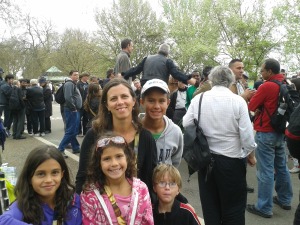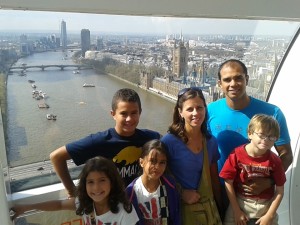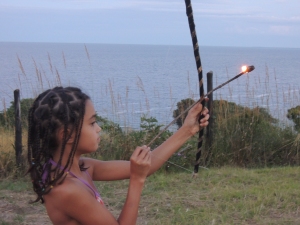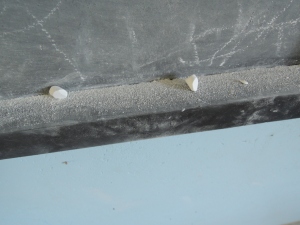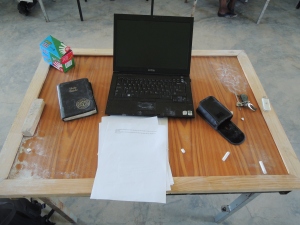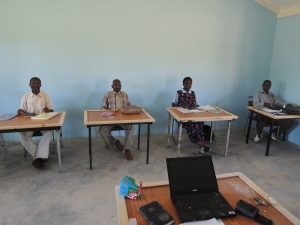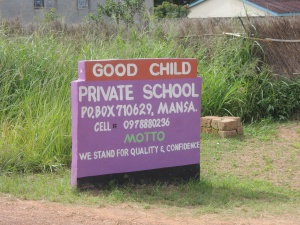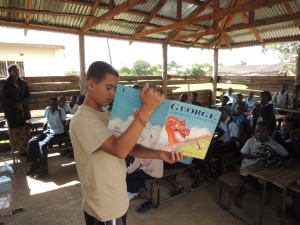Well all good things on earth must come to an end. Thankfully our time in heaven will be unending! We leave for Dubuque tomorrow morning. As you might expect for Julie and the kids it’s bitter sweet. They have enjoyed their time here but they miss their life in Dubuque. I miss it too, but there is just so much to see and learn here that I could stay for the year. It has been a fantastic experience from a professional development perspective. The dig itself opened my eyes to another set of data points that should be used to interpret the Bible. Participating in an excavation where we uncovered some of that data was very valuable. We have less than a week to go and we’re not wasting any time. There are still places to go and things to see! We just returned from Eilat on the Red Sea. Known in the Bible as Elath or Eloth, and near Ezion-Geber, the city sits at the north end of the Gulf of Aqaba arm of the Red Sea (Deut. 2:8). The region was important as an outlet for maritime trade in the Bible just as it is important as a port region today. Solomon and the rulers who followed him used this port as a trading center (1 Ki. 9:26; 2 Ki. 14:22; 16:6; 2 Chr. 8:17; 26:2). Today, the modern state of Israel still relies on maritime trade that passes through Eilat. In fact they consider the closing of the Straits of Tiran, further south on the Gulf of Aqaba, an act of war. These days things are pretty peaceful so it was fun and educational!
If you’ve been listening to the news, maybe you heard that an archaeologist claims to have discovered a palace of king David at a site overlooking the Elah Valley. This of course would be a sensational find if it could be verified. There is a debate raging right now about the nature of the kingdoms of David and Solomon. The Bible describes them as having large territories with well organized administrations, tax systems, and for Solomon, great wealth. The problem is that archaeologists have not been able to verify these details on the ground. Now before anyone says, “Well we don’t need to verify these claims. The Bible makes them, we just have to believe them,” remember that it is the apostle Paul who points us to the importance of verifying historical claims that have theological consequences. In his argument for the importance of the resurrection in 1 Corinthians 15, Paul reminds his readers that some of the people to whom Christ appeared were still alive. He believed that verification of the resurrection was important. This of course raises a troubling question related to the kingdoms of David and Solomon. What does it mean that archaeologists have not been able to positively verify remains from David’s kingdom? Does it mean he didn’t exist? That was the entrenched opinion in the 70s and 80s until the discovery of the Tel Dan inscription. Many scholars argued that David was a figment of Israel’s imagination. That like king Arthur, Israel had created a myth to validate their existence. This construct came to an inglorious end in 1993, when an Aramaic inscription was found that made reference to someone from the “House of David.” Now this inscription does not prove the existence of David. What it does is provide evidence, incredibly valuable evidence, that a ruler in Judah was known abroad as having come from a “House of David.” To most scholars nowadays, this evidence is just too strong to dismiss. The consensus is that David was a historical figure. So the debate has now moved from a discussion about whether David existed or not, to a discussion about the nature of his kingdom. That is, does the Bible accurately describe David’s empire? Here is where the new discovery comes in. This site, Khirbet Qeiyafa, is located on the border between the Philistine kingdom and the Israelite kingdom of Saul and David. If David did rule over a nascent kingdom that was in conflict with the neighboring Philistines, then archaeologists might expect to uncover evidence of that kingdom on the ground. This is just what Yossi Garfinkel claims to have found. But is this indisputably true? There is no doubt that he found a large, building on the highest part of the site. His analysis suggests that it should be dated to 10th century BC. Also on the site, he discovered a building which he calls an administrative store room and claims that it was used to store agriculture products collected as tax payments. These evidence, when taken together, suggests administration. The size of the building suggests that it was a public structure. This points to a government that either had the money to pay people to build such a large edifice, or the power to force them to do it. Could it have been a palace? Maybe. It’s not like Garfinkel uncovered a sign that says “Welcome to David’s Palace”. Could it have been another kind of public, governmental structure? Possibly. Until more evidence comes out, and until other archaeologists and scholars have had a chance to verify Yossi’s claims, the best course of action is to wait on any definitive conclusion. If you’re looking for a talking point to use in conversation I would suggest this: Archaeologists have discovered buildings and artifacts that suggest a governmental type of authority was operating in the Elah valley in the 11th and 10th centuries BC. How’s that for a mouthful? No matter how much you might want this to be David’s palace, waiting until there is more evidence is a better choice.
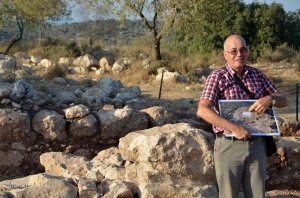
Maybe you heard the news about the discovery of one of David’s palaces. I was at the press event and this is the man, Yossi Garfinkel who has made the claim.
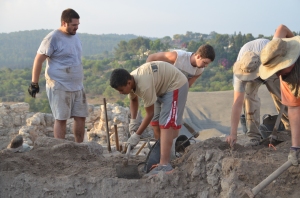
The boy worked harder than he has in his life. Let’s hope it translates into a good work ethic at home.
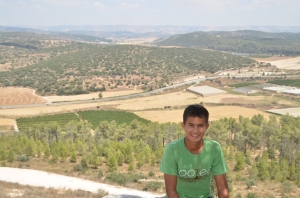
Our young man on Tel Azekah overlooking the Elah Valley. This is the location of the confrontation between David and Goliath.
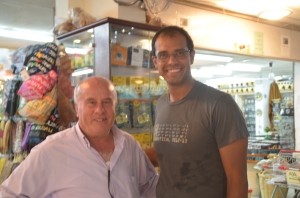
No kidding. This guy lives in the West Bank. We were chatting and I told him I was from Iowa, four hours west of Chicago. He said he knew where Iowa was. I’m thinking, yeah sure you just want me to buy something. He says to me in moderately good English “I like to visit my son in Chicago. When I go I like to rent a car and drive on Hwy 20. So many hills and then I see the casino and Wisconsin on the one side, Iowa on the other side and Illinois…” He’d been to Dubuque. I couldn’t believe it.

